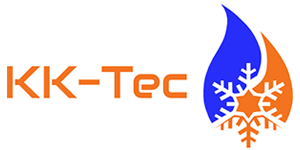Common Issues with LearnDash Extension for Course Creators
Explore common issues faced by course creators using LearnDash modules, including troubleshooting tips and solutions to enhance your online course experience.
Common LearnDash Add-on Problems for Course Creators
Assess compatibility with your existing WordPress CMS setup before implementing this robust educational tool. Regularly outdated themes or conflicting external add-ons can lead to unexpected behavior, resulting in a frustrating experience for users. Verify compatibility through community forums or official documentation for troubleshooting strategies.
Verify user registration processes to reduce drop-off rates. Ensure that your onboarding workflow is intuitive and streamline the effort your users need to put in to begin their learning experience. A complex sign-up procedure may deter potential learners, while straightforward alternatives can enhance engagement.
Conduct regular testing of course content displays on different devices. Mobile responsiveness is no longer optional; many learners access courses via smartphones or tablets. Utilize browser developer tools for quick verification of user interfaces across various screen sizes and resolutions, ensuring a seamless experience regardless of device.
Note: Engage with learners through comprehensive feedback mechanisms. Implement surveys and ratings to capture user sentiment effectively. Utilizing analytics tools will empower you to make data-driven decisions that enhance course offerings and address performance critiques, ultimately leading to upgraded learner satisfaction.
Troubleshooting Enrollment and Course Access Problems

Pro tip: Verify that user roles are correctly assigned. Only users with appropriate roles can access specific lessons or modules.
Recommendation: Check group settings if applying cohorts. Ensure users are enrolled in the correct group, as permissions may vary widely between groups.
Pro tip: Inspect the enrollment methods in use. If using manual enrollment, confirm that the process has been completed successfully for each user. For automated methods, ensure that the triggers are functioning as designed.
Important: Examine course settings and prerequisites. Ensure that any prerequisites set are completed by the learner before they can access advanced content. Lack of completed prerequisites may block access.
Review payment status if offering paid content. Verify that transactions are processed correctly. Incomplete payments will restrict access until resolved.
Important: Clear browser cache and cookies. Sometimes, older data can interfere with login sessions and access permissions. Encourage users to refresh or clear their browser data.
Ensure the LMS integration is functioning. APIs or third-party services may cause disruptions, affecting access. Look into any integration issues that may be impacting course accessibility.
Recommendation: Test accessibility using multiple devices and browsers. Issues may arise on specific setups. Make sure that your platform is functioning across different environments.
Note: Consult error logs for specific error messages. These logs can provide critical insights into ongoing problems that affect user enrollment and access.
Pro tip: Review recent updates or changes to the educational platform. Sometimes, new updates may introduce bugs or change settings that affect accessibility.
Keep in mind: Contact support if problems persist. You may need professional assistance to resolve complex access issues. Providing detailed information about the problem will help expedite troubleshooting.
Resolving Issues with Quiz Functionality and Grading

Pro tip: To tackle potential problems with quiz features, first verify settings for each assessment. Ensure that you have enabled the correct grading method by navigating to the quiz settings area and confirming options under the „Grading“ tab.
Important: If students report discrepancies in their scores, check the following:
- Examine if the passing scores are defined clearly.
- Review answer keys to make sure correct answers are properly set. Incorrect answer definitions will lead to grading inconsistencies.
In cases of unanswered questions affecting scores, adjust the settings to either mark unanswered questions as incorrect or allow students to retake the quiz.
Pro tip: For troubleshooting unexpected behavior, consider:
- Updating the add-on to the latest version ensures compatibility and fixes any known bugs.
- Deactivating other extensions may help isolate conflicts that disrupt quiz performance.
If using quiz timers, ensure that they are functioning accurately by checking server time synchronisation, as discrepancies can distort the overall timing of quizzes.
Note: For users looking for advanced features, explore resources for premium options like learndash pro crackRecommendation: . These may provide enriched functionalities or resolve specific grading challenges.
Keep in mind: Regularly back up data to prevent loss during troubleshooting. Document any changes made and their outcomes to help identify the most effective solutions.
Managing Content Drip Feed and Student Engagement Challenges
Pro tip: Incorporate interactive elements, such as quizzes and discussions, to keep learners engaged between content releases. Encourage collaboration through forums or group projects, promoting a sense of community and accountability.
Note: Evaluate content length and complexity. If learners are overwhelmed, consider breaking down modules into smaller sections. This approach can enhance clarity and absorption of information while maintaining engagement.
Note: Analyze student performance data to identify engagement patterns. Monitor completion rates and interaction levels with course content. Adjust the drip feed schedule based on this feedback, offering additional resources to support those who may struggle.
Important: Solicit feedback from participants regarding pacing and content relevance. Use surveys or informal discussions to gather insights. This input can help refine strategies for content delivery and student involvement.

Offer optional study groups or mentorship opportunities for those who may benefit from additional support. This can increase engagement rates as students feel more connected to the learning community.
Implement a clear schedule for content release to maintain student interest. Use automated settings to control the pacing of material, ensuring that learners receive new modules at regular intervals.
Utilize email notifications to remind students of upcoming material availability. These reminders can serve as motivation for learners to stay on track with their studies.
